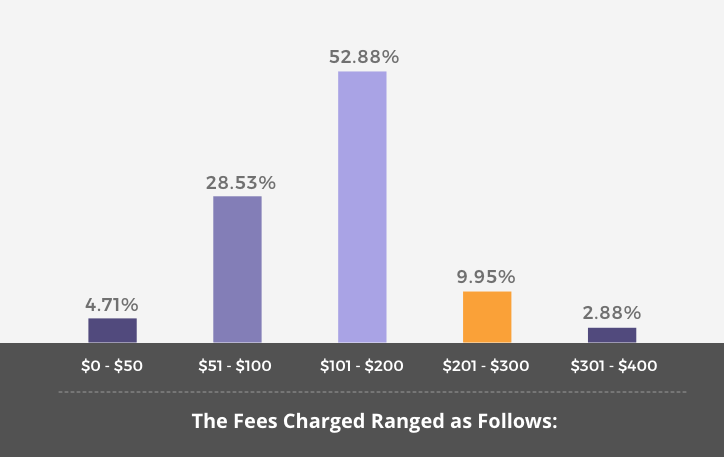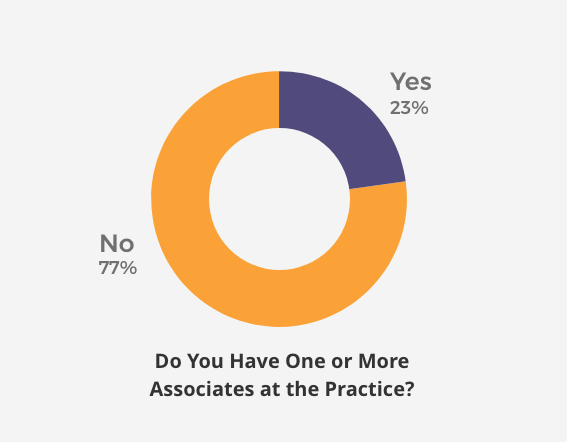The 2024 State of Chiropractic Survey Part II:
The Business of Chiropractic
Beyond the Adjustment Table: Embracing the Full Scope of Chiropractic Practice
A Comprehensive Report from Over 600 Chiropractic Professionals (Part 2)
For today’s chiropractors, the journey from student to practitioner is filled with learning the intricacies of the human spine, mastering adjustment techniques, and understanding the profound impact of chiropractic on overall health.

However, as this second part of our State of Chiropractic Report can attest, the transition from chiropractic school to running a successful practice reveals a significant gap in preparedness:
61.8% of respondents say that they could have used more business education.
These findings highlight a demand for educational opportunities to prepare new chiropractors to thrive in the chiropractic marketplace, right from the start. We also unpack the data surrounding financial practices, career satisfaction, and hiring Associates.
Key findings:
- An overwhelming majority of chiropractors wished they learned more about running a business in school.
- Insurance acceptance may be dwindling in the new generation of chiropractors, but is that sustainable?
- When it comes to insurance acceptance and payment plans, the practitioners who offer both are the happiest.
- Career satisfaction is significantly higher in chiropractors who have hired at least one associate.
Let’s dive in…
Learning How to Run a Successful
Chiropractic Practice
We asked hundreds of chiropractors around the world “What didn’t chiropractic school prepare you for?” The responses highlight the additional skills and knowledge crucial for a thriving practice – skills that chiropractors say they lack as they begin their career and look to open their own practices.
Chiropractors Said Their Schooling Did Not Prepare Them For:


What does this tell us? That chiropractic students and new grads might benefit from exploring educational and/or coaching opportunities in the areas of business and practice management. Overwhelmingly, chiropractors feel that their schooling did not prepare them for the intricacies of running a business.
The good news? There are many chiropractic coaches out there who have been in it – building a practice from the ground up – and they’re willing to share what they’ve learned so you can start your practice with a leg up. Don’t be afraid to learn from others.
Fees, Adjustments, and Insurance, Oh My!
A key component of running a practice is the financial side. What should you charge? Are you going to accept insurance or offer payment plans? All important decisions, so let’s take a look at what chiropractors today are doing…

What Do Chiropractors Charge Patients for Their First Visit?
*Note: These figures are in USD.
Chiropractors charge, on average, $143 for their first visit, however, we saw a large range of fees charged for first time visits from a low of $20 to a high of $485.



75% of practitioners who accept insurance adjust on the first visit, compared to only 59% of cash-only practitioners.

Interesting Findings on Insurance Acceptance
Insurance acceptance is dwindling with only 41% of new chiropractors (1-3 years in practice) accepting insurance, compared to the 73% of 20+ year veterans who take insurance.
Interestingly, 30% of chiropractors who accept insurance work more than 40 hours per week, whereas only 20% of cash practice chiros work more than 40 hours per week.
That said, chiropractors who offer insurance AND payment plans report greater happiness with their careers, suggesting that accepting insurance is a sustainable business practice.

Furthermore, offering insurance means more patient appointments for chiropractors. 72% of chiropractors who said that their books are continually filled accept insurance.
Meanwhile, chiropractors who accept insurance are less likely to say that they need more patients ASAP. Only 58% of chiropractors who say that they need more patients ASAP accept insurance.

Payment Options and Job Satisfaction:
- Insurance AND Payment Plans: Job Satisfaction: Very high, with only 0.6% not satisfied with their career.
- Neither Insurance nor Payment Plans: Job Satisfaction: Lower, with 10% not satisfied with their career.
- Insurance but NO Payment Plans: Job Satisfaction: Moderate, with 3.5% not satisfied with their career.
- NO Insurance but Payment Plans: Job Satisfaction: Moderate, with 3.2% not satisfied with their career.
There’s a noticeable trend where chiropractors who offer more flexible payment options (insurance and/or payment plans) tend to report higher job satisfaction. This might be due to the ability to attract a wider patient demographic, leading to a more stable and profitable practice.

Early-Career Chiropractors Embrace Payment Flexibility, Foregoing Insurance
The data also clearly shows that the group with the largest percentage of newer chiropractors, by a significant margin of 12%, is the one that does not accept insurance, but does offer payment plans. This trend indicates that early-career chiropractors are gravitating towards models that prioritize payment flexibility without the complexities and administrative burdens associated with insurance.
Patient Experience and New Patient Flow
The percentage of chiropractors including an adjustment with the first visit is notably higher (92%) in the group that accepts insurance, but does not offer payment plans, which might reflect on the expectations of patients using insurance for their care. In stark contrast, only 48% of chiropractors in the opposite group (those who do not accept insurance, but do offer payment plans) adjust on the first visit.
The need for new patients ASAP is particularly acute among those who do not accept insurance, but do offer payment plans (47%), indicating potential struggles in attracting patients without the lure of insurance coverage. However, considering this group also has the highest proportion of new chiropractors, the heightened demand for new patients could be attributed to the fact that they’re still in the initial phase of building their patient base.
Growing the Business: Hiring Associates
Associates and Practice Growth
Who Is Hiring Associates? 11% of chiropractors who have hired at least one associate have been practicing for less than eight years, compared to 19% of those with no associates. With this small variance, years of experience may not be much of an indicator for whether or not a practice has associates.
Having Associates Is Common Among Those Who Did Associateships: The data reveals that a significant majority (66%) of chiropractors with associates had themselves been associates at some point. This suggests that those who experienced the benefits of being an associate are more inclined to hire associates in their practice. It implies a mentorship or growth pathway within the chiropractic community that values the associateship experience.
Higher Acceptance of Insurance with Associates: There’s a notable difference in insurance acceptance between practices with associates (86%) and those without (62%). This could indicate that practices with more hands on deck are better equipped to manage the administrative and operational demands of processing insurance claims, making them more accessible to a broader patient base.


Resilience and Recovery Post-Pandemic
Lower Rate of Business Struggle Post-Pandemic:
Only 2% of chiropractors with associates reported their business struggling post-pandemic compared to 10% without associates. This suggests that practices with more chiropractors might be more resilient and capable of adapting to challenges, possibly due to shared responsibilities and diversified expertise.
Higher Consistent Booking Rates:
A significant finding is that 83% of chiropractors with associates report being consistently booked, versus 54% without associates. The presence of associates may increase a practice’s capacity to handle appointments, reducing wait times for patients and potentially improving patient satisfaction and retention.

Patient Booking and Satisfaction
Increased Career Satisfaction:
There’s an 18 point difference in career satisfaction (those who stated they are very satisfied) between chiropractors with (77%) and without associates (59%). This could reflect the benefits of shared workload, collaborative practice environment, and potentially higher income or professional fulfillment from mentoring associates.

Implications for Chiropractors Considering Hiring Associates
The survey suggests that bringing associates into a chiropractic practice might not only offer a buffer against unforeseen challenges, but also foster growth by expanding the patient base.
We can assume that this strategy not only brings financial and operational advantages, but also enriches professional fulfillment, likely due to the opportunities for mentorship and the collective satisfaction derived from helping a larger number of patients.
Moreover, having more chiropractors on the team allows for a more strategic management of patient appointments, keeping the practice busy yet capable of welcoming new patients, which is crucial for ensuring consistent revenue and maintaining the quality of patient care.
The Business of Chiropractic:
Prepare Yourself to Thrive
The State of Chiropractic Survey results underscore the importance of business and management skills in achieving practice success and highlights evolving trends in financial and patient management strategies.
For chiropractors at any stage of their career, the survey serves as a call to action to embrace continuous learning, seek mentorship, and explore innovative practice models to enhance their service offering and patient care.
By doing so, chiropractors can not only bridge the gap in business preparedness, but also ensure their practices thrive in a competitive, and often unpredictable, healthcare landscape.

